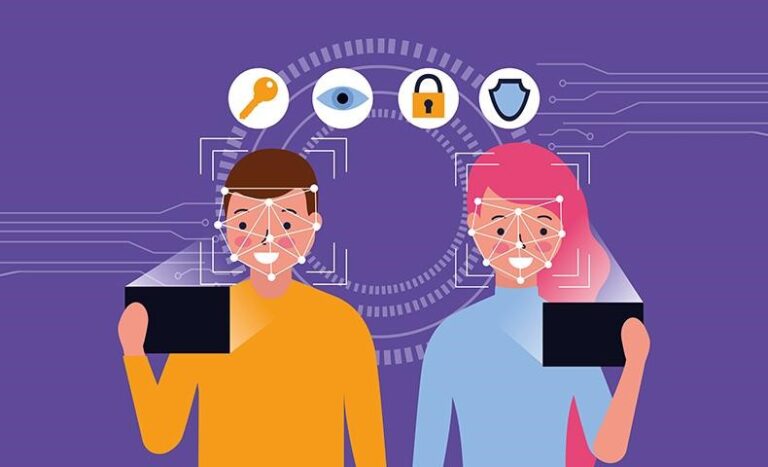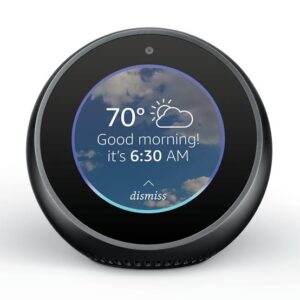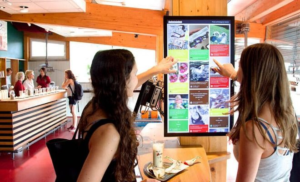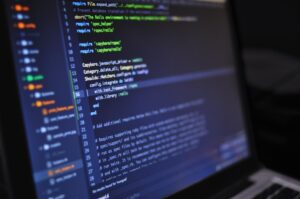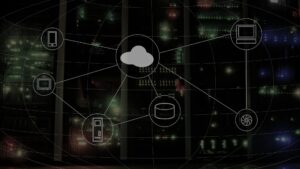The ability to detect a face from an image or video, and identify or verify it using an existing database is perhaps one of the critical milestones in the history of automated systems. In fact, it makes machines or systems a step closer to human intelligence, thus making them more efficient and accurate than ever.
“No wonder facial recognition apps and systems are fast becoming a staple in modern systems, with encouraging and evident results seen in the security, business, education and entertainment industries.”
Let us explore the essence behind this technology, and how it has transformed the technological landscape despite being a few decades old.
Evolution of Facial Recognition Technology
Today’s sophisticated facial recognition systems are a result of a long period of evolution which saw the technology moves from a partly manual system, to fully automated and high-accuracy systems.
Initially, users had to manually input coordinates of key facial landmarks such as nose and eyebrows in a device known as the Rand tablet, which would then carry out the rest of the processes. This was then followed by a three-decade research effort by the scientific community, which led to the introduction of fully automated systems in the late 1990’s.
Since then, the technology has been on an upward trajectory, as evidenced in the new and powerful features which have significantly increased its accuracy and reliability to unprecedented levels.
How good is face recognition technology today?
Integration of new facial recognition techniques such as 3D scans, and skin texture analysis in the early 2000’s raised the accuracy levels of facial recognition to unprecedented levels. As revealed by the Facial Recognition Grand Challenge in 2006, new features had raised the accuracy to 10 times above 2002 systems, and 100 times above the systems designed in 1995.
According to a facial recognition progress report by Crawford and Mark, the overall error rate consistently declines by a factor of 272, which equates to about 50% after every two years.
“The best way to enhance security is through facial recognition — it’s going to be the standard very soon.” -Kesha Williams
Applications of facial recognition
Facial recognition technology has a tremendous scope when it comes to applicability. This is reflected in a considerable number of industries which are quickly accepting it as a huge part of growth.
Key areas of application include authentication systems, surveillance and investigations, medical diagnosis, behavioural analysis in retail marketing, and social media. Authentication systems and surveillance represent the technology’s earliest and most extensive areas of application.
As other industries are still considering its benefits, others are exploring and gradually incorporating it into their essential systems with a notable degree of success.
“The year 2018 was a fast-track year in facial recognition technology, whose speed of growth had override other AI sectors including robotics, voice recognition and natural language processing,” -Yang Yuxin
How do facial recognition systems work?
In general terms, the process can be understood in three main steps, namely: face detection, feature extraction/face print creation, and identification or verification. An intermediate phase involving image alignment/normalization can be added between detection and extraction. Identification and verification can also be collectively called matching.
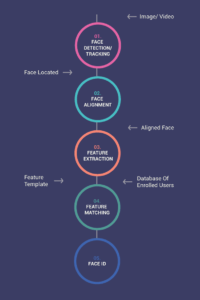
Detection
As the name suggests, this stage allows the software to deduce if there is a face in the captured image. Basically, the system identifies and extracts patterns within the image which it then compares with a standard image of a face. Reasonable similarity implies the presence of a face in the image.
Extraction/Faceprint creation
Extraction mainly involves the identification and calculation of special parameters on the face by means of an algorithm within the system. There are a number of approaches used by different systems to carry out the extraction process.
Geometric extraction:
This approach focuses on the precise calculation of spatial relationships of different features. These include distances between eye corners, cheekbones, and jaw size.
Photometric approach:
The system computes the face as a combination of several faces to eliminate possible variations.
Skin texture analysis:
This uses the unique features of an individual’s skin as data for recognition. It basically turns such features as lines, patterns, pores, and spots into digital or mathematical information which can be saved in the database.
3D techniques:
These techniques utilize 3-dimensional sensors to obtain information about the features of a face in a 3-dimensional space. This allows it to capture more information relating to the landmarks in question. The method eliminates the effect of variations in lighting and does exceptionally well in different viewing angles.
Combination:
Some of the best facial recognition algorithms combine the above techniques to exploit the advantages of each type. This addresses most of the weaknesses associated with each approach.
Verification and identification
Verification and identification differ based on the number of images being compared. Verification compares the individual’s image to the one in the database in order to come up with a value that indicates the extent of the similarity. This is a common application in authentication systems such as payment systems and mobile devices.
Identification is about determining if the extracted image matches with one of the images in the database. This is commonly seen in surveillance or tracking systems.
“Written feedback, voice feedback and body language will be the holy trinity to delivering a robust customer experience once facial recognition technology is mastered.” -Brennan Wilkie
— Monica Ross is a content writer and manager at Devathon – One of the leading web and app development company.

